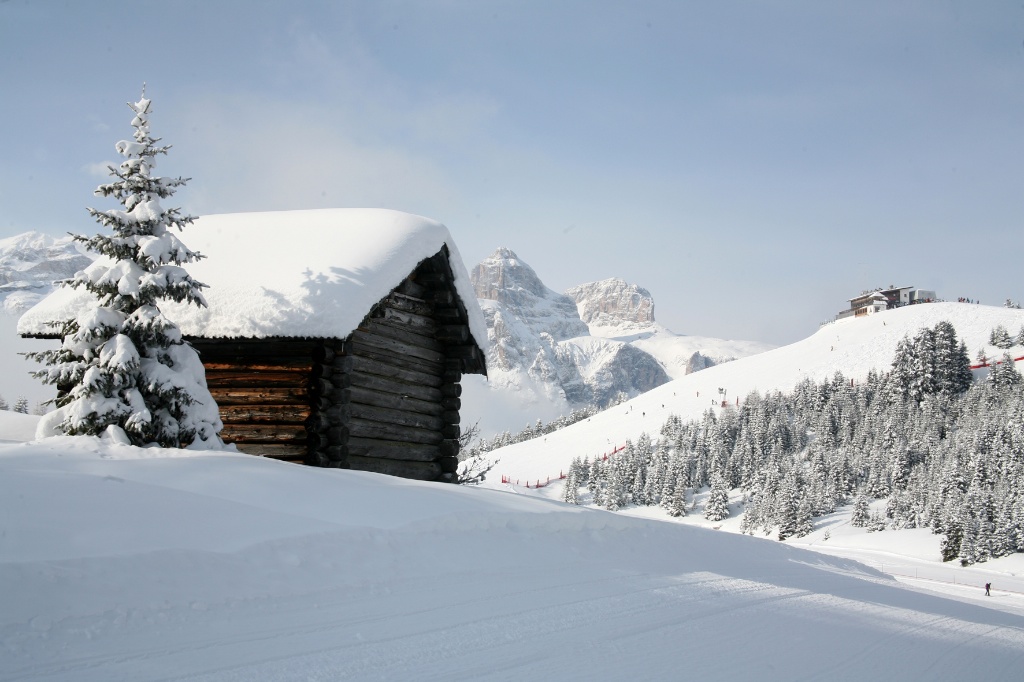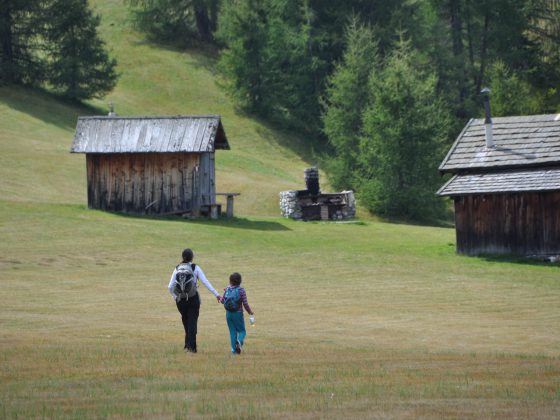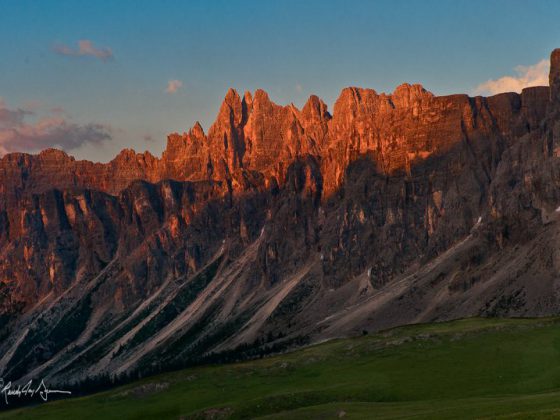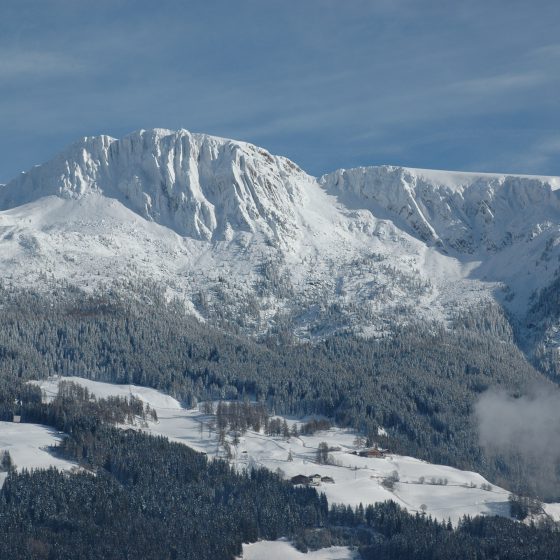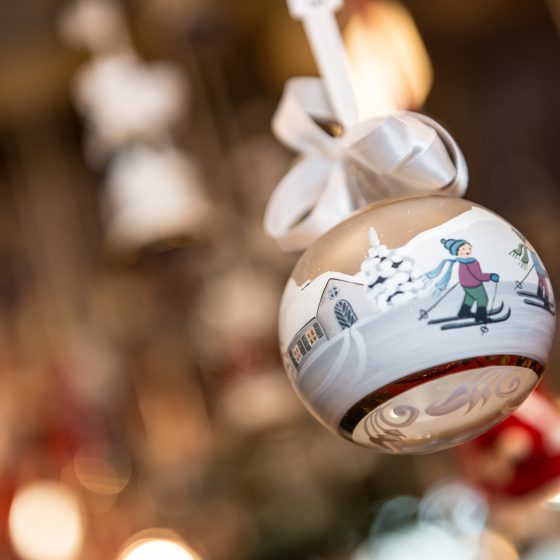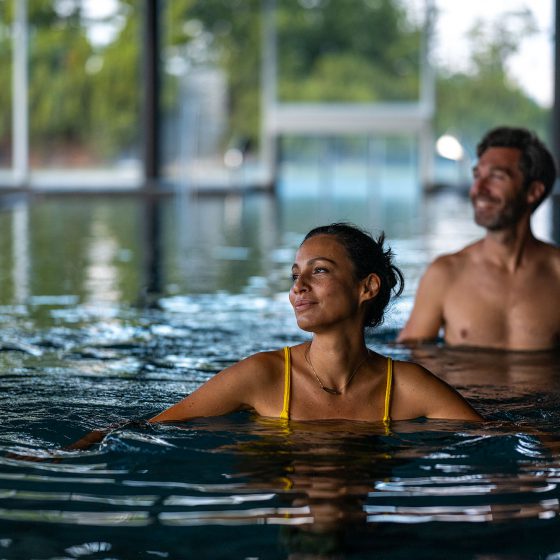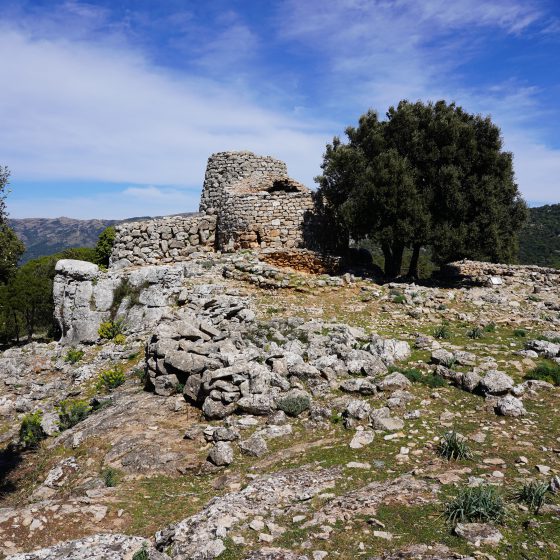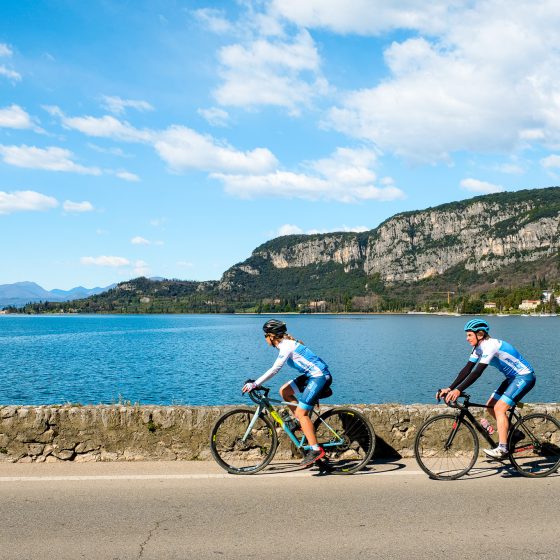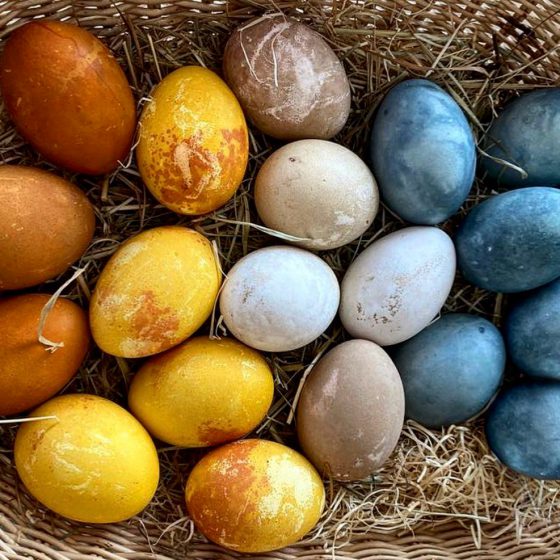Snow is what makes the Dolomites truly come alive. So how can you be sure that when you visit the fluffy white stuff will be plentiful? Simple: it’s guaranteed. Here’s how.
Skiers and snowboarders alike will all attest that there is nothing better than seeing a snow-covered landscape as you head out for a day on the slopes. That’s one of the many things that makes the selection of a winter holiday destination so important – what is the average snowfall for the region each year? Are there manmade snowmaking capabilities? Is the snow light? Heavy? Or icy? Fortunately, the Dolomite Mountains not only offer light, dry snow, but have snowmaking capabilities, guaranteeing skiing in the region from December to April at one of the largest ski resorts in the world!
Ample Snow Courtesy of Mother Nature
The location of the Dolomites, combined with its altitude, creates the perfect conditions for winter weather – plenty of white flakes followed by sun-soaked days perfect for outdoor adventure. It doesn’t get any better than that! Average snowfall exceeds two meters (7′) in the Dolomites each winter, accomplishing that with just 13 snow days per year, and eight out of ten days of sun each winter. Of course, this varies by resort, with the highest resort, Arabba/Marmolada, not surprisingly commanding the largest totals – an average of four meters (13′) average annual snowfall. SWEET!
While the Dolomites may receive less precipitation on an annual basis than the majority of destinations in the Alps, its geographical position makes up for it with milder mountain temperatures. The dry conditions here make for powdery snow, and also help make extreme cold spells that visit from December through February not only tolerable, but pleasant.
Man-Made Snow = Snow-Sure Winters
Of course, Mother Nature can’t always be counted on to provide the perfect conditions… Fortunately, the innovative folks who call this winter paradise home have enlisted the help of technology when the conditions could use a little boost.
Almost all of the ski slopes in the Dolomiti Superski area are equipped with modern snowmaking systems, which help ensure that a fresh blanket of crisp white snow will await you each day. In fact, of the 1,200 kilometers (745 miles) of pistes, more than 97 percent (1,160km / 720 miles) have snowmaking capabilities, requiring more than 4,700 snowmaking machines – that’s a lot of snow! And snow generated by these systems is “real,” meaning there are no additives involved. It is actual snow, made from pure water from the local crystal-clear mountain streams, and transformed into fine particles of fluffy white snow perfect for skiing and snowboarding.
In order for this man-made snow to blend perfectly with the natural stuff that falls from the sky, crystal-clear spring water from local mountain streams is pulled in, chilled through the snow-making machines, and then forced out alongside pressurized air at an extremely high level of force through snow guns. These snow guns, or snow cannons, use a combination of pumps, fans, and nozzles to work their magic. As the chilled water hits the air, it combines with the sub-freezing conditions of the atmosphere, and is transformed into snowflakes – simulating the organic crystalline flakes that fall from the sky. Just like that, snow is manufactured by combining water and air, and like natural snow, without any chemical additives. Again, the Dolomites climate lends a hand here, with the cold, dry air facilitating the process.
When the man-made snow hits the ground, it blends with the heaven-sent snow that already blankets the slopes. At the end of winter, the natural cycle repeats – the snow melts, returns to the natural rivers and streams in spring, and is slowly collected over the summer in the resorts’ modern storage basins that integrate with the environment, and made into snow again the following winter.
For years, snowmaking has been used at ski resorts to supplement natural snow. This has allowed ski resorts to improve the reliability of their snow coverage, and to extend their ski seasons. As the climate changes, snowmaking is increasingly being employed at ski resorts worldwide. Fortunately, technological innovation is helping to drive the development of cleaner snowmaking systems, guaranteeing not only perfect ski slopes, but the life and future of ski areas and winter tourism in general.
So What Does this Mean for Off-Piste and Ski Touring?
While the snow guns may not cover off-piste runs or backcountry terrain, as mentioned above the fantastic location and altitude of the Dolomites create the perfect conditions for winter weather.
When the snowpack is deep, the Dolomites offers numerous off-piste routes that are unlike anything you will experience anywhere else. From the northern flanks of the Marmolada Glacier to the couloirs of Tofana, Faloria, Cristallo, and Lagazuoi in Cortina, plus the descents on the Sella Massif, there are innumberable opportunities for great off-piste skiing. The key is being flexible, and following the snow. Even in off-peak years, the couloirs serve as catch basins, collecting the snow for fantastic descents. The key? Leveraging local knowledge and guides to fimd==nd the best stashes xxx. After all, that’s why we’re here!
Snow / Neve / Schnee / Nëi
Whether you speak English (snow), Italian (neve), German (schnee), or Ladin (nëi), you are likely to agree that snow is one of the few things that can make the already magical Dolomite Mountains even more beautiful. And if you enjoy snow, and you love taking part in outdoor adventures, the Dolomites are the place to be. With the marriage of nature and technology, you’ll be guaranteed to see plenty of white stuff while you’re here – just another reason the Dolomites are the destination of choice for outdoor winter activities!

